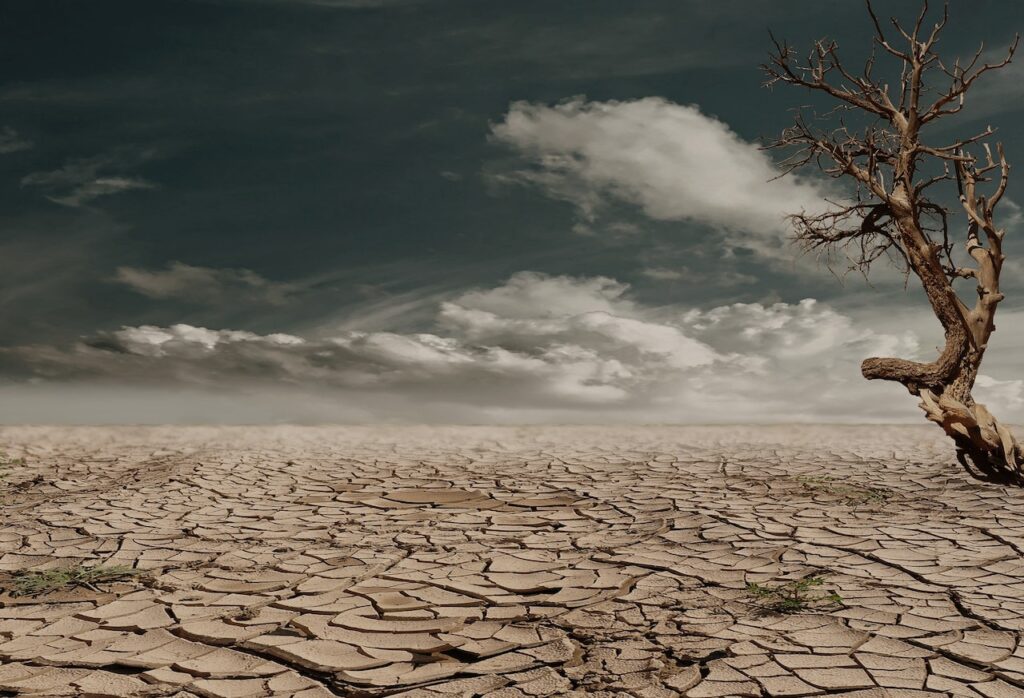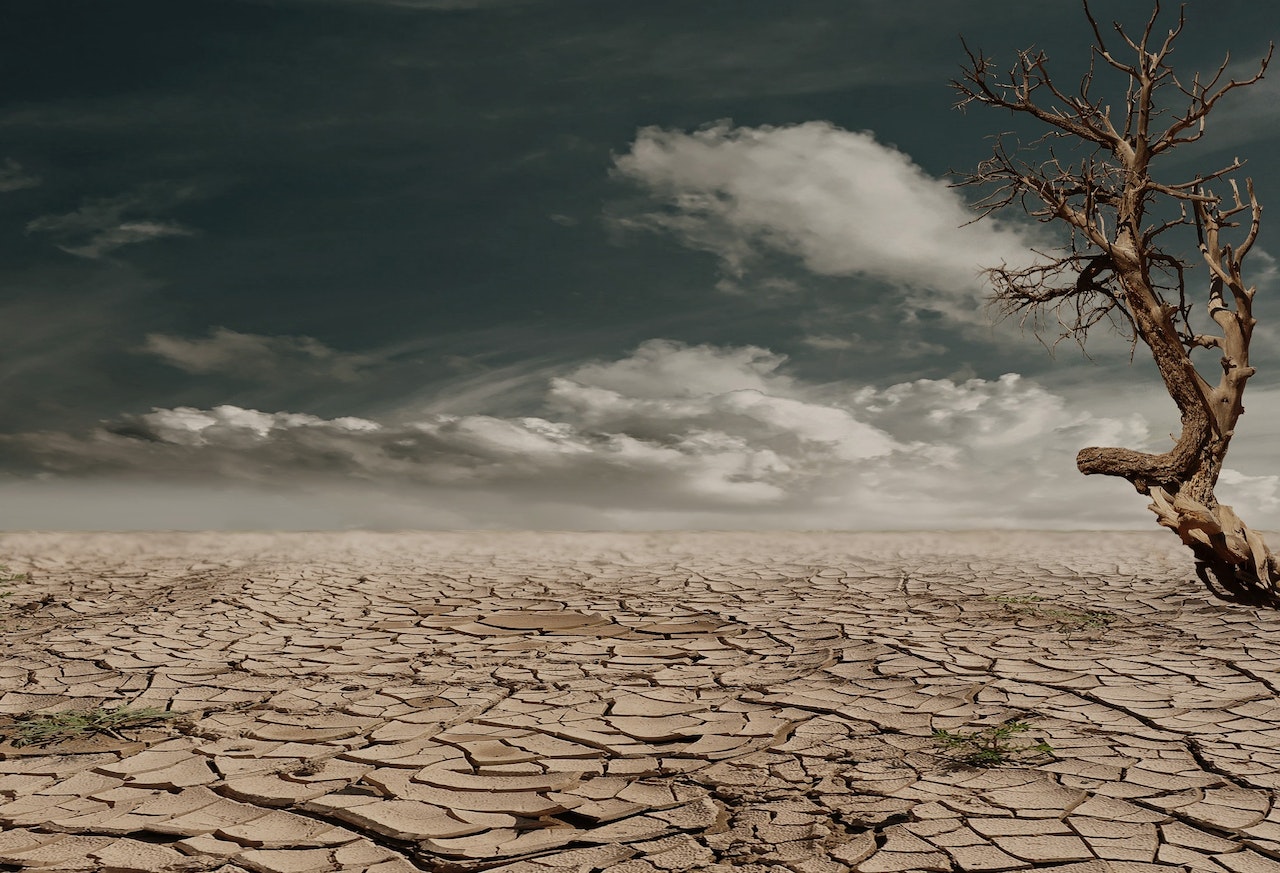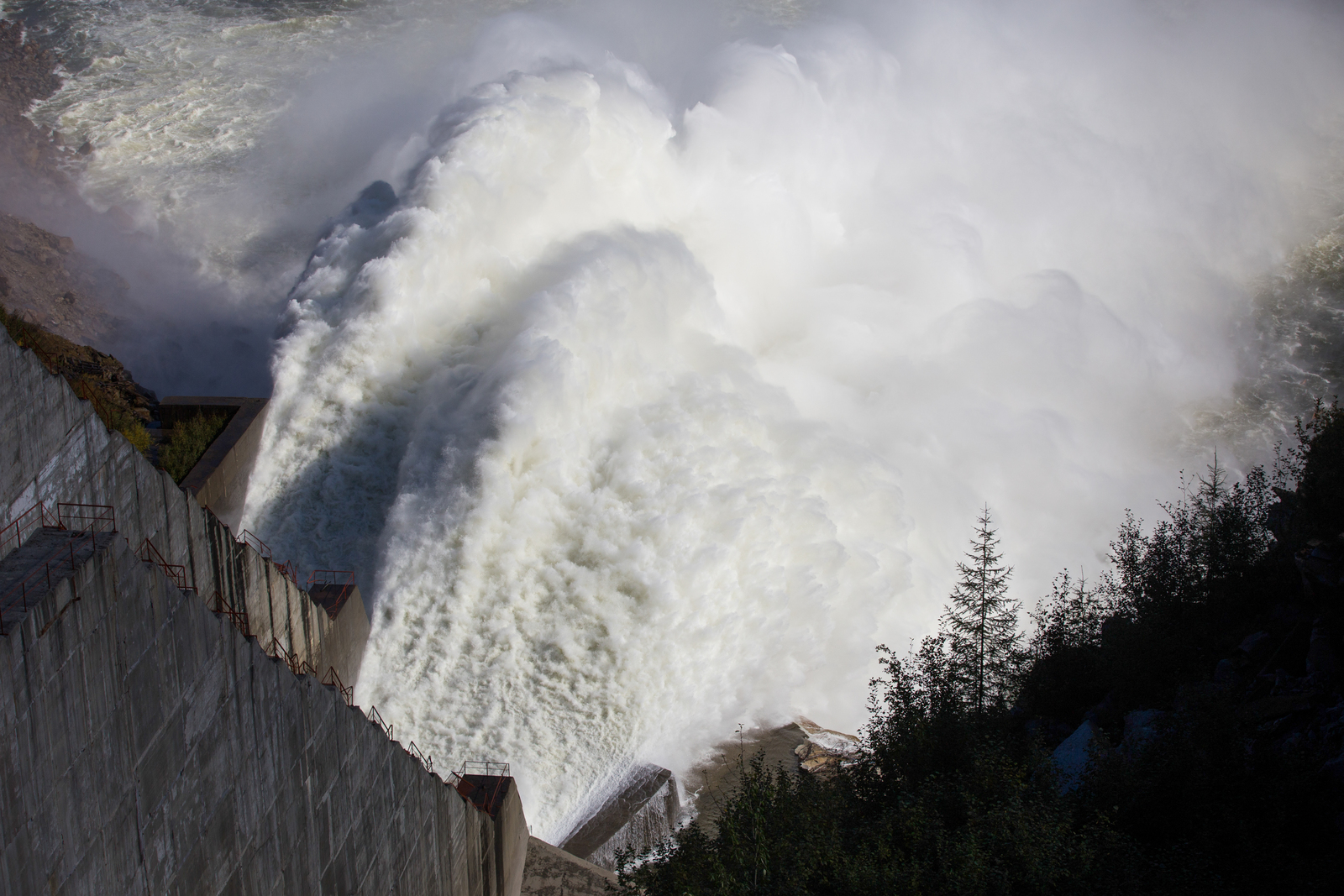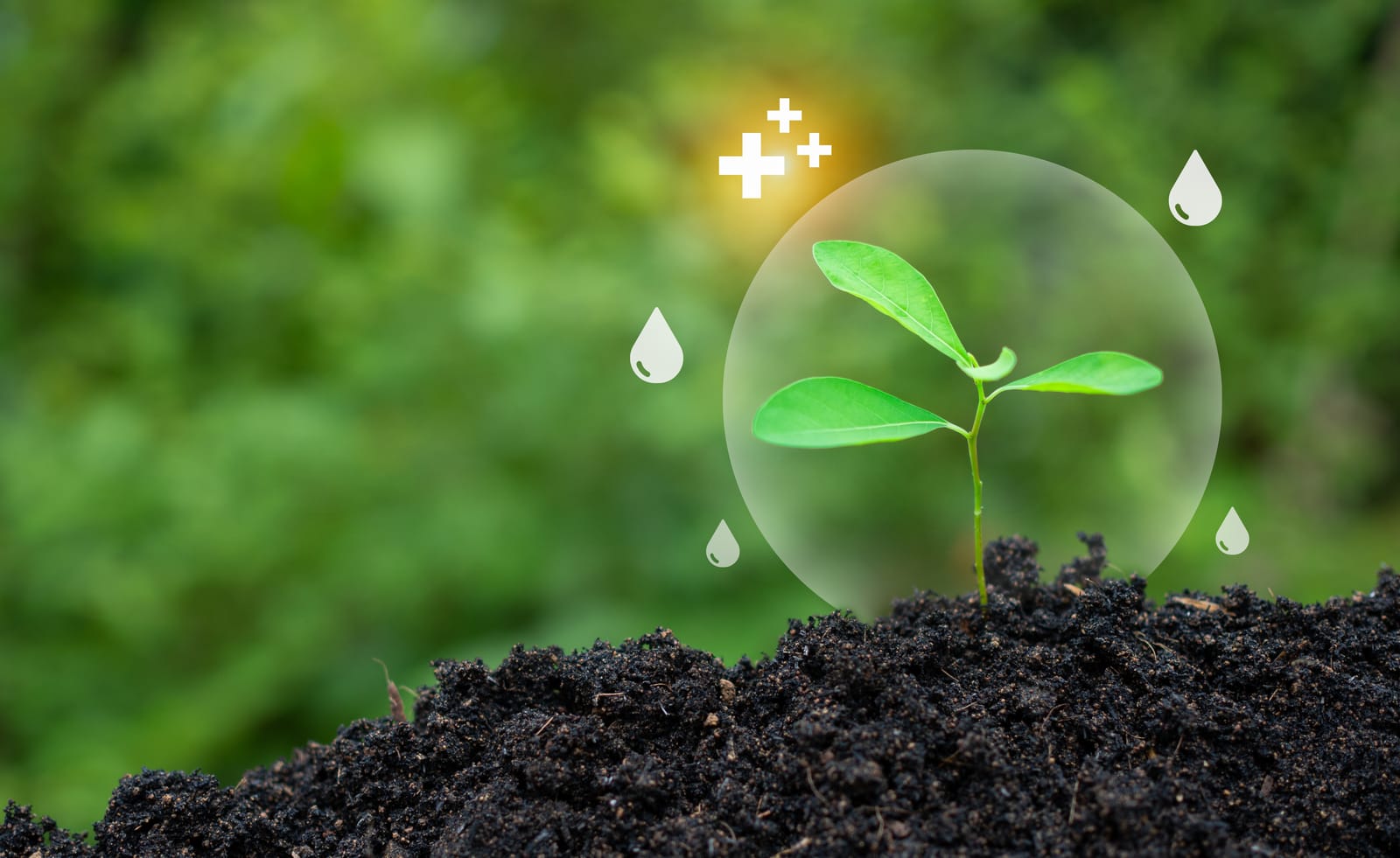
Water scarcity, a pressing global issue that affects millions of lives daily, is the lack of sufficient, clean water resources needed to meet our basic demands.
By 2025, an alarming 1.8 billion people are expected to face this crisis, with two-thirds of the world’s population living in water-stressed areas, and over 2 billion lacking reliable access to safe water.
From its impact on human health and agriculture to contributing to political conflicts and ecological devastation worldwide, understanding water scarcity becomes crucial for finding sustainable solutions.
Key Takeaways
- Water scarcity is the lack of sufficient fresh water resources to meet standard water demands, caused by physical limitations like drought and economic factors like poor infrastructure.
- There are two main types of water scarcity: physical and economic. Physical water scarcity occurs when natural limitations prevent people from accessing adequate amounts of clean and safe water, while economic water scarcity arises due to financial constraints or poor management that hinders access despite ample freshwater resources nearby.
- Water scarcity has significant impacts on human health, environmental sustainability, food security, and economic development. It can result in diseases such as cholera and dysentery, agricultural productivity reduction leading to higher food prices, loss of biodiversity and ecological balance causing forest fires that destroy vast areas of trees.
- Urgent attention must be given by individuals, governments, and international organizations towards sustainable solutions for equitable access to safe drinking water while preserving natural ecosystems for future generations.
Understanding Water Scarcity
Water scarcity is the lack of sufficient fresh water resources to meet standard water demands, caused by physical limitations like drought and economic factors like poor infrastructure.
Defining Water Scarcity
Water scarcity, in its simplest form, refers to the lack of sufficient fresh water resources to meet standard water demands for households, agriculture, industry and ecosystems.
This global challenge poses a significant threat to human health, economic growth and environmental sustainability.
There are two main types of water scarcity: physical and economic. Physical water scarcity occurs when natural limitations prevent people from accessing adequate amounts of clean and safe water.
For instance, factors like droughts or depletion of groundwater sources can lead to physical scarcity of water in specific regions even if minimal infrastructure needs exist.
On the other hand, economic water scarcity arises when issues related to financial constraints or poor management hinder access despite the availability of ample freshwater resources nearby; this often results in limited distribution networks that leave millions without reliable access to clean drinking water (fact 6).
Types Of Water Scarcity
Water scarcity can be categorized into two main types: physical water scarcity and economic water scarcity.
Physical water scarcity refers to a situation where there is inadequate access to water resources, particularly for drinking, sanitation, and agriculture. This type of water scarcity typically occurs in arid regions with low rainfall or those prone to droughts. Areas affected by physical water scarcity have limited freshwater resources and must rely on alternative sources such as underground aquifers or importing water from other regions.
Economic water scarcity, on the other hand, refers to a situation where there is a lack of investment in infrastructure and technology necessary to make adequate use of available freshwater resources. This type of water scarcity typically affects regions that have sufficient amounts of freshwater but lack the funds or expertise needed to develop their water supply systems further.
Both types of water scarcity have far-reaching impacts on human health, environmental sustainability, food security, and economic development. Therefore, it’s crucial for individuals, governments, and international organizations to work collaboratively in addressing the root causes and implementing effective solutions.
Causes Of Water Scarcity
Water scarcity is caused by multiple factors including:
- Climate change: As temperatures rise, water evaporates faster and rainfall patterns shift, leading to droughts in some areas and floods in others.
- Overuse of water resources: Agriculture, industry, and urbanization have led to the over-extraction of groundwater sources and rivers for irrigation purposes.
- Population growth: The increasing number of people puts a strain on water resources where fresh drinking water is scarce.
- Poor water management: Inefficient use of water resources, lack of investment in infrastructure, and failure to implement adequate policies are also contributing factors.
- Pollution: Contamination of water sources from chemicals, waste disposal, and other sources makes it unusable for consumption or irrigation.
It’s essential that we understand the causes of water scarcity to develop effective solutions for sustainable use of limited freshwater resources.
Impacts Of Water Scarcity
Water scarcity has numerous impacts, including adverse effects on human health from consuming contaminated water, economic losses due to agricultural productivity reduction, environmental degradation resulting in biodiversity loss and ecosystem damage, and conflicts over water resources leading to political tensions.
Effects On Human Health
Water scarcity has significant effects on human health, with a lack of clean and safe water leading to numerous diseases such as cholera, typhoid fever, and dysentery.
Lack of access to basic sanitation facilities also exposes people to illnesses caused by poor hygiene practices. Poor water quality can lead to diarrhea which is responsible for the death of 2.2 million people globally each year; most of these deaths are in children under the age of five living in developing countries where access to improved sanitation is limited.
In addition, women and girls often have to travel long distances in search of water sources resulting in poor reproductive health outcomes, including fistulae due to prolonged labor and other complications during childbirth.
Economic Impact
Water scarcity has a significant economic impact, particularly in areas where water-intensive industries such as agriculture and manufacturing are prevalent.
Extreme droughts can lead to crop failures and reduced yields, resulting in higher food prices.
Moreover, inadequate access to clean drinking water increases healthcare costs as people suffer from various illnesses related to poor sanitation. This puts an additional burden on public health systems that may already be struggling with limited resources.
Environmental Consequences
The environmental consequences of water scarcity are far-reaching and impactful. As water becomes scarce, ecosystems struggle to survive, leading to a loss of biodiversity and ecological balance.
Wetlands dry up, rivers and lakes shrink, and wildlife habitats disappear. In addition, droughts caused by water scarcity often lead to forest fires that destroy vast areas of trees and greenery that help control air pollution levels.
Moreover, as freshwater resources become scarcer and wastewater treatment facilities fail or become overwhelmed, untreated sewage flows into rivers and oceans polluting natural bodies of water with waste products such as pesticides fertilizers chemicals nitrogen phosphorus salts microplastics pathogens antibiotics toxins etc., ultimately causing an adverse effect on the health of marine life which can then have cascading effects on seafood supply chains for human consumption.
Conflicts Over Water Resources
Water scarcity has led to conflicts over water resources, particularly in areas where access to water is limited. In some cases, these conflicts have even escalated into violent disputes between communities and nations.
For example, the Nile River basin has been a source of tension between Egypt and Ethiopia over its proposed Grand Ethiopian Renaissance Dam project.
In order to prevent such conflicts from arising or escalating further in the future requires careful management of existing water resources and equitable distribution practices that cater for everyone’s need.
Global Water Scarcity
Global water scarcity is a growing concern due to the current state of the world’s water resources, impacts of climate change and identification of hotspots around the world.
Current State Of Global Water Resources
The current state of global water resources is alarming. According to the United Nations, about 2 billion people don’t have access to safe and clean drinking water, while over 4 billion people lack basic sanitation services.
Additionally, two-thirds of the world’s population faces water scarcity for at least a month every year.
Water scarcity hotspots include regions such as sub-Saharan Africa, Central Asia, and parts of South America where poverty levels are high, and infrastructure lacks development.
To address this crisis requires collective action from governments around the world to prioritize investment in sustainable water management practices.
Impacts Of Climate Change On Water Scarcity
Climate change is one of the major drivers of water scarcity, and its impacts are expected to worsen in the future. Rising temperatures lead to increased evaporation rates, causing a reduction in water availability.
This means that even areas with abundant rainfall can experience droughts due to climate change.
In addition to reducing freshwater supplies, climate change also affects the quality of available water resources by promoting algal blooms and fostering the spread of harmful bacteria and viruses.
The effect on aquatic ecosystems further exacerbates these challenges by altering habitat conditions for fish and other organisms. These impacts ultimately reduce crop yields affecting food security while creating conflicts between competing users leading it as well towards international cooperation measures needed for sustainable management purposes.
Water Scarcity Hotspots Around The World
Water scarcity is a major global issue affecting millions of people, and some regions are more vulnerable than others due to various factors such as climate change, population growth, and inadequate water management. Here are some hotspots facing water scarcity:
- Middle East and North Africa: This region has been experiencing water scarcity for decades due to high evaporation rates, low precipitation levels, and rapid population growth. Countries like Saudi Arabia, Jordan, and Yemen face severe water stress.
- South Asia: With a rapidly growing population and limited freshwater resources, South Asian countries like India and Pakistan are struggling to cope with increasing demand for water. Climate change-induced melting of Himalayan glaciers exacerbates the problem.
- Sub-Saharan Africa: Many countries in sub-Saharan Africa face chronic water scarcity due to droughts, desertification, political instability, and lack of access to safe drinking water. Regions like the Sahel belt are particularly vulnerable.
- Central Asia: Arid landscapes and inefficient irrigation practices have compounded the water crisis in Central Asian countries like Uzbekistan and Turkmenistan. The shrinking of the Aral Sea has exacerbated the problem.
- Australia: The continent faces one of the worst droughts in history due to climate change-induced extreme weather events such as bushfires. Major cities like Sydney are at risk of running out of water unless immediate action is taken.
These regions highlight how widespread and urgent the issue of global water scarcity is. Action must be taken at all levels to ensure that everyone has access to clean and safe water for their basic needs.
Solutions To Combat Water Scarcity
Implementing various water conservation methods, such as reducing usage and fixing leaks, investing in modern irrigation systems, building effective rainwater harvesting infrastructures, pursuing desalination technologies, and fostering international cooperation are some solutions that can improve global water availability.
Conservation Methods
Conservation methods play a crucial role in addressing water scarcity. Here are some effective ways to conserve water:
- Fix leaks – A dripping faucet can waste gallons of water every day, so check all plumbing fixtures regularly and repair any leaks immediately.
- Install low-flow fixtures – By installing low-flow showerheads, toilets and faucets, you can reduce your household water consumption by up to 30%.
- Use efficient irrigation – Water your plants during the cooler hours of the day to reduce evaporation and install drip irrigation systems to target plant roots better.
- Landscape wisely – Xeriscaping is an approach that involves using native plants that require minimal watering and no pesticides or fertilizers.
- Recycle greywater – Greywater from showers, sinks and washing machines can be reused for other purposes like irrigating landscapes.
- Harvest rainwater – Rainwater harvesting involves collecting and storing rainwater from rooftops for later use.
- Reduce household use – Be mindful of how much water your household uses daily; be aware of your laundry cycles length, take shorter showers, etc.
By implementing these conservation methods, individuals and communities can make meaningful contributions toward combatting water scarcity while promoting sustainable practices for future generations.
Water Reuse And Recycling
Water reuse and recycling is a critical solution towards addressing water scarcity. Recycling and reusing wastewater from industries, households, agriculture, and other sources can significantly reduce the demand for freshwater resources.
The treated wastewater can be used for non-potable purposes such as irrigation, industrial processes, flushing toilets, or replenishing groundwater reserves.
In addition to conserving freshwater supplies and reducing costs associated with water treatment plants’ infrastructure development creates green jobs when conducting research in waste management systems that create value within local economies.
Desalination
Desalination is a process that removes salt and other minerals from seawater to make it safe for drinking and agricultural purposes. It has become an important solution to combat water scarcity in areas with limited freshwater resources, especially in arid regions.
The technology involves several techniques such as reverse osmosis, distillation, and ion exchange. Among these, reverse osmosis is the most common method used to desalinate seawater.
However on the downside of it all; Desalination also has its challenges.
Rainwater Harvesting
Rainwater harvesting is a sustainable solution to combat water scarcity and preserve precious resources. Harvesting rainwater involves collecting, storing, and using the rain that falls on our roofs or open areas for various uses such as irrigation, cleaning, and drinking in certain cases.
This method reduces runoff and erosion while increasing groundwater recharge. Rainwater harvesting systems come in different sizes depending on their intended use.
Aside from conserving water resources, rainwater harvesting has economic benefits by reducing demand on municipal water supplies resulting in lower utility bills.
Furthermore, it can also be used as an alternative source of clean water during emergencies when traditional sources are not available due to contamination or drought effects.
The Urgency Of Addressing Water Scarcity And The Role Of Individuals And Communities In Action
Water scarcity is one of the most critical challenges facing our world today. With climate change and population growth exacerbating the issue, addressing water scarcity has become more urgent than ever.
One way that individuals can make a difference is by conserving water at home. Simple measures like taking shorter showers, fixing leaks, using water-efficient appliances, and recycling greywater can go a long way in reducing household water consumption.
Another essential aspect of tackling water scarcity is international cooperation. Countries need to work together towards finding sustainable solutions for managing shared freshwater resources across borders.
Ultimately, solving the problem of water scarcity will require effort from all levels- individual actions such as conservation methods will be effective if we are willing to commit ourselves fully as well as government initiatives such as funding desalination projects or promoting better management practices within watersheds around the world.
Conclusion
In conclusion, water scarcity is a global issue that affects millions of people around the world. It occurs when communities don’t have access to clean and safe water due to physical limitations or economic factors.
The impacts of water scarcity are far-reaching, affecting human health, the environment, and even leading to conflicts over resources. While there are solutions available such as conservation methods, desalination, and recycling, it’s important for individuals and communities to take action towards sustainable practices.
With climate change exacerbating this problem, urgent attention must be given to ensure everyone has access to this basic necessity.
FAQs:
1. What is water scarcity?
Water scarcity refers to the lack of access to safe and drinkable water due to various factors such as drought, pollution, climate change, and poor management of water resources. It affects millions of people around the world and can have severe consequences for human health, agriculture, and economic development.
2. How does water scarcity affect communities?
Water scarcity often leads to a variety of challenges for communities such as food insecurity, increased poverty rates due to reduced crop yields and income generated from farming activities. In addition it also increases the risk of diseases related inadequate or unsafe drinking water plus hygiene issues that arise due a lack adequate sanitation facilities
3. What causes water scarcity?
Water scarcity can be caused by natural factors like droughts or floods but also human-made aspects such as over-extraction from aquifers & unsustainable agricultural practices which lead land degradation thus reducing amount ground percolation resulting in decrease ground-water recharge
4. How can we address water scarcity?
Addressing this crisis requires taking proactive steps including cutting down on wasteful consumption behaviors at both individual and collective levels; investing in sustainable practices like rainwater harvesting ,properly conservingWater resource developments through infrastructure projects aimed at mitigating potential negative impacts while ensuring improved availability & accessibility for all stake holders across different sectors within society



